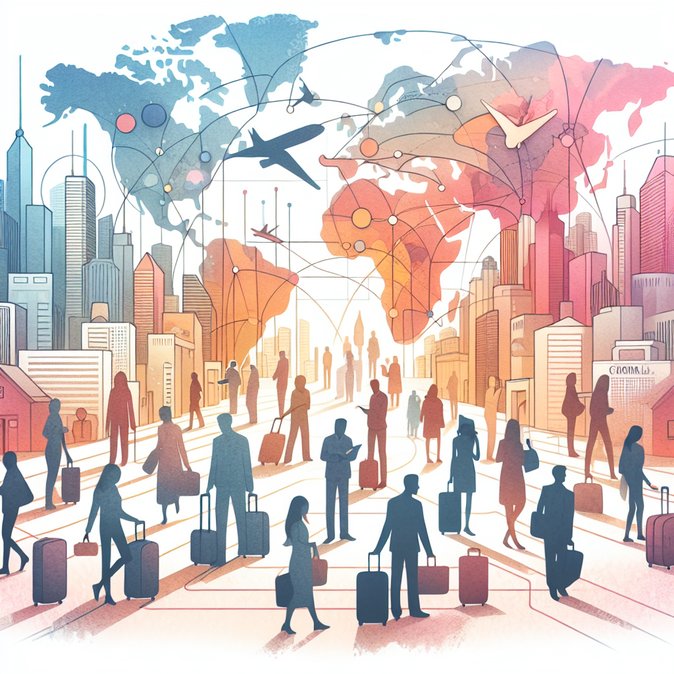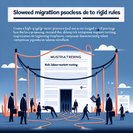
Australia’s long-anticipated 4 + 1 Year Work Visa officially opened for online applications on 1 November 2025 . The new stream replaces several legacy temporary-skilled visas (including the 482 TSS and 494 Regional Skilled Employer–Sponsored visas) with a single, more flexible pathway designed to attract—and keep—high-value global talent.
Unlike its predecessors, the visa grants an initial four-year stay with freedom to change employers inside an approved industry list (health, technology, construction, agriculture, education and renewable energy are priority sectors). After four continuous years, holders can obtain a one-year extension (“+1”) that meets residence requirements for a direct permanent-residency application. The Department of Home Affairs has set a headline minimum salary of AUD 90 000 (indexed every two years) to protect both migrants and local workers, while offering two-year tax-free incentives for jobs located in designated regional areas.
![Australia launches new 4 + 1 Year Work Visa; applications open 1 November 2025]()
Government modelling suggests the scheme could bring in 120 000 skilled workers in its first year, easing chronic shortages in healthcare, engineering and the clean-energy build-out. Industry groups such as the Australian Chamber of Commerce have praised the simpler rules, noting that the previous layered visa system deterred urgently needed international talent. Unions, however, warn that strong auditing will be essential to prevent exploitation, especially in lower-paid care and hospitality roles that fall below the salary threshold.
For businesses, the benefits are immediate: a faster, fully-digital processing window (target 8–12 weeks), the ability to recruit across borders without multi-stage nomination paperwork, and government rebates for regional sponsorships. Multinationals planning large projects in Western Sydney’s Aerotropolis, the Pilbara hydrogen hub or Queensland’s Olympic infrastructure have already signalled that they will pivot recruitment pipelines to the 4 + 1 model. International professionals gain full work rights for spouses, access to Medicare and a clear, time-bound pathway to permanent residency—something competitor economies like Canada and the UK are only beginning to replicate.
Practical tip: employers can lodge nomination and visa documents simultaneously through the new ImmiAccount interface; early applicants report saving up to six weeks compared with the outgoing TSS process. HR teams should update mobility policies immediately to align salary bands and regional incentives with the new statutory minimums.
Unlike its predecessors, the visa grants an initial four-year stay with freedom to change employers inside an approved industry list (health, technology, construction, agriculture, education and renewable energy are priority sectors). After four continuous years, holders can obtain a one-year extension (“+1”) that meets residence requirements for a direct permanent-residency application. The Department of Home Affairs has set a headline minimum salary of AUD 90 000 (indexed every two years) to protect both migrants and local workers, while offering two-year tax-free incentives for jobs located in designated regional areas.

Government modelling suggests the scheme could bring in 120 000 skilled workers in its first year, easing chronic shortages in healthcare, engineering and the clean-energy build-out. Industry groups such as the Australian Chamber of Commerce have praised the simpler rules, noting that the previous layered visa system deterred urgently needed international talent. Unions, however, warn that strong auditing will be essential to prevent exploitation, especially in lower-paid care and hospitality roles that fall below the salary threshold.
For businesses, the benefits are immediate: a faster, fully-digital processing window (target 8–12 weeks), the ability to recruit across borders without multi-stage nomination paperwork, and government rebates for regional sponsorships. Multinationals planning large projects in Western Sydney’s Aerotropolis, the Pilbara hydrogen hub or Queensland’s Olympic infrastructure have already signalled that they will pivot recruitment pipelines to the 4 + 1 model. International professionals gain full work rights for spouses, access to Medicare and a clear, time-bound pathway to permanent residency—something competitor economies like Canada and the UK are only beginning to replicate.
Practical tip: employers can lodge nomination and visa documents simultaneously through the new ImmiAccount interface; early applicants report saving up to six weeks compared with the outgoing TSS process. HR teams should update mobility policies immediately to align salary bands and regional incentives with the new statutory minimums.








